This exercise was conducted as a part of Computational Design course. The main objective is to investigate a complex facade solution, propose a variable computational logic behind its design and create a tool to recreate it in a parametric manar.
Reference
Following multi-storey car park in Scheffield, UK designed by Allies and Morrison served as a reference for an assignment.
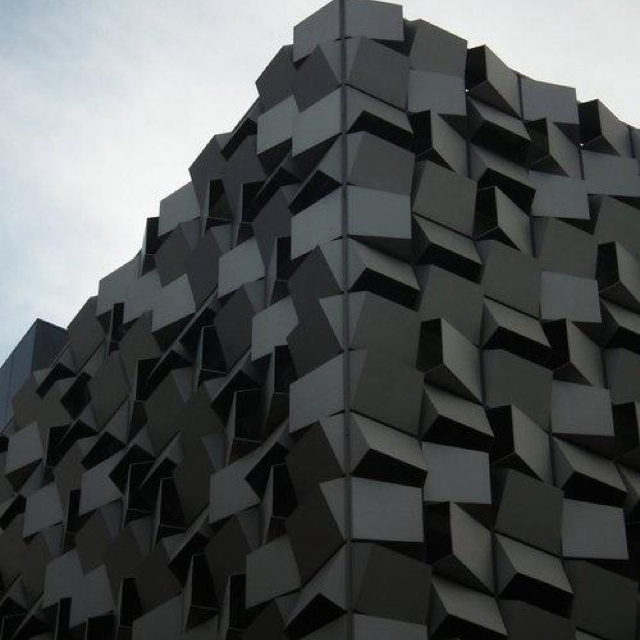
Reference / Parametric facade
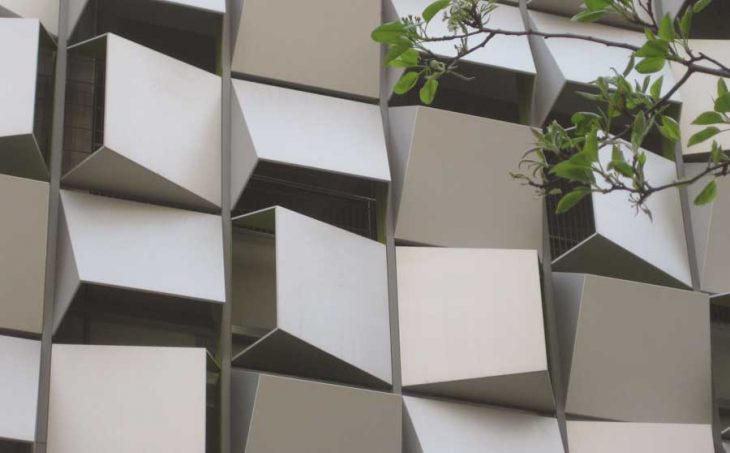
Detail / Parametric facade
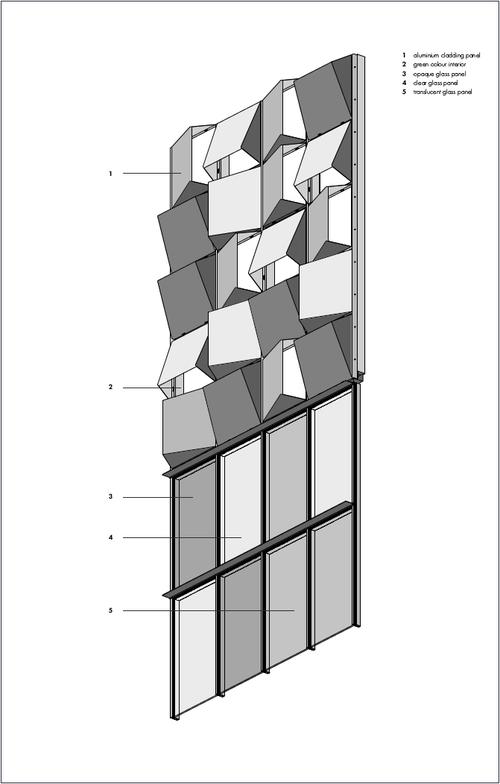
Scheme / Parametric facade
Often, due to strict regulations of functionality of the car parks, the way the facade is being solved provides one of the few potentials for architectural expression. In this project, despite industrialized approach to fabrication (all tiles are of the same geometry) architects played with imputing as much as possible both functional (combining light, ventilation and shielding with one gesture) and visual diversity into these elements – creating a distinctive image.
Process
Based on this, developing a plan for parametrisation:
- Create an outline;
- Make the edge out from initial surface relative to the tile base;
- Create a gap around the element;
- Multiply elements into a serie;
- Randomize the rotation of elements.
Additionally, specifying parametric control elements the definition has to incorportate:
- Geometrical size of the tiles;
- Geometrical size of the edge;
- Amount of tiles vertically and horizontally;
- The index of open face;
- Randomization parameter.
Following these outlined principles the design process consists of these script definition groups:
- base:
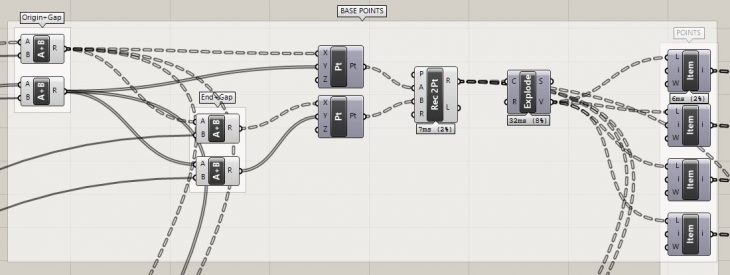
- edge:

- gap:

- serie:
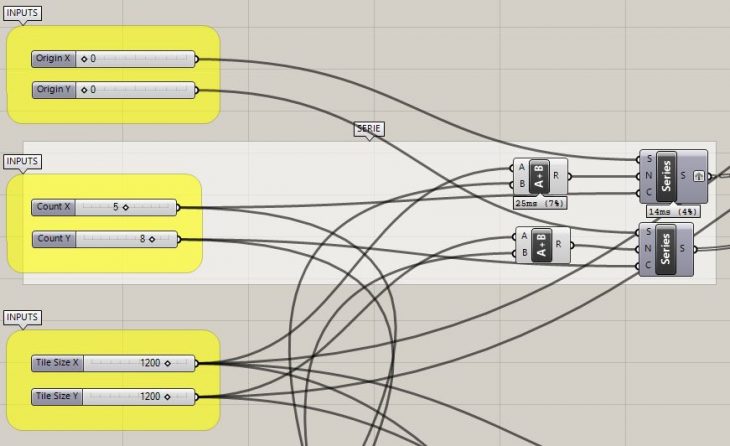
- tile (selecting one face to be discarded and joining the rest):
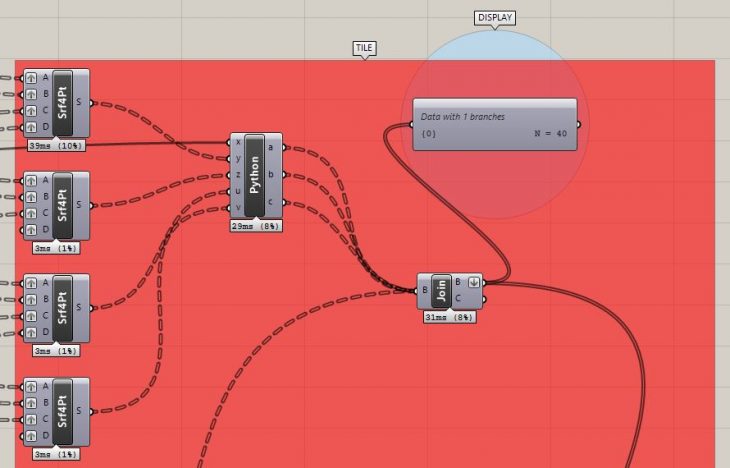
- rotation:

Thus, the results of the exercise are:
- inputs:

- overview:
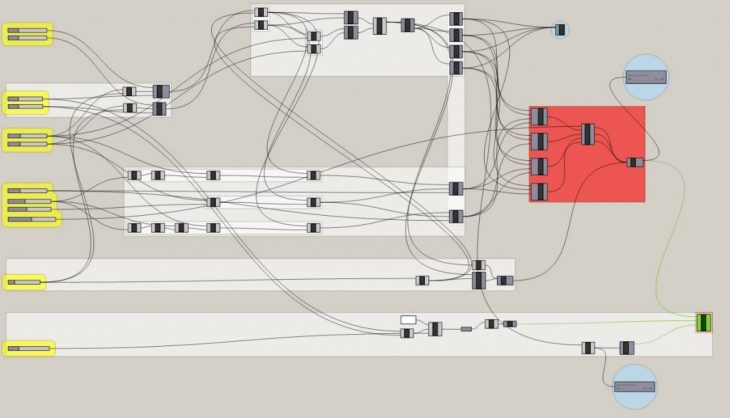
- geometry:
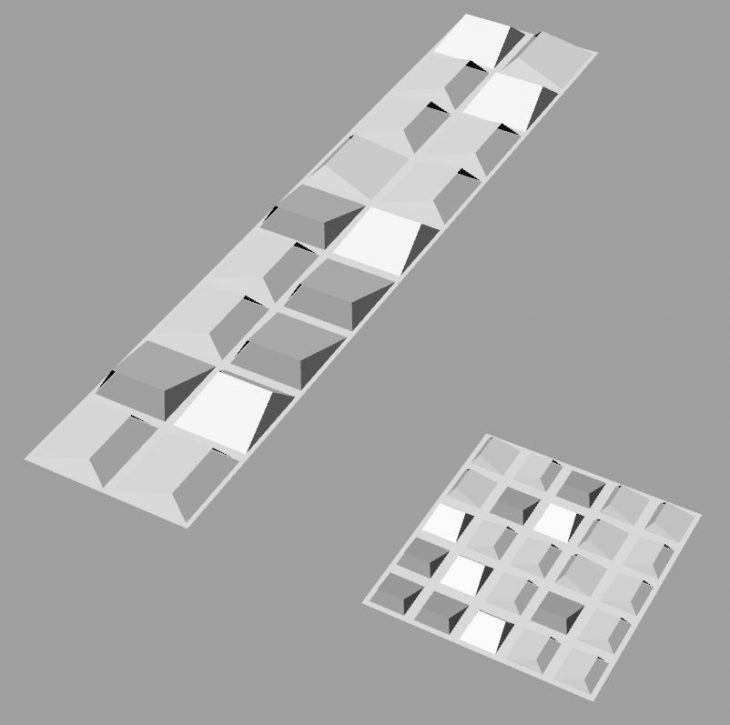
- randomization:
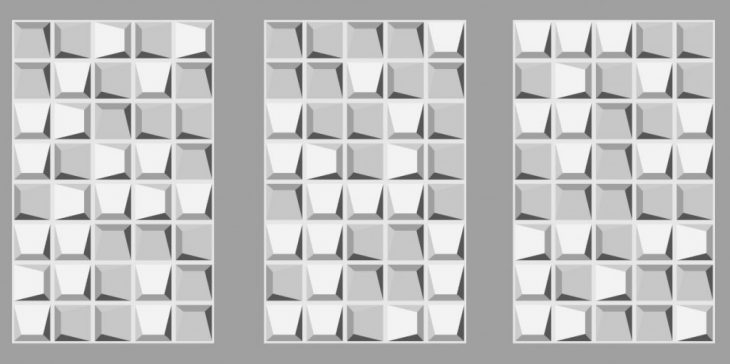
- openings:
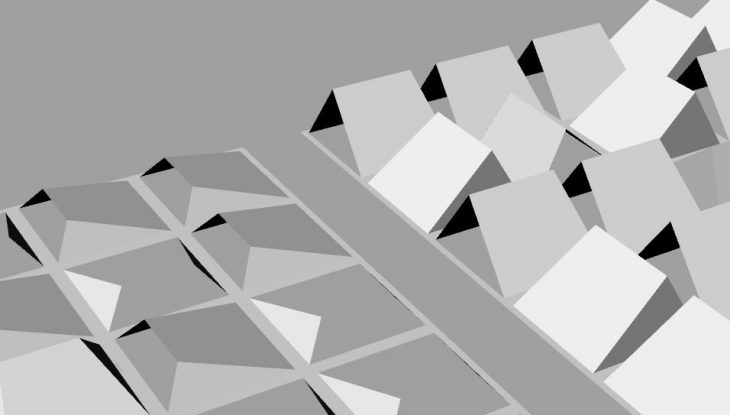
In conclusion, with this amount of flexibility concentrated as control inputs, such parametric tool could be adapted to fit specific necessities of particular project.
Computational Design // Assignment 1 is a project of IaaC, Institute for Advanced Architecture of Catalonia
Developed at Master in Advanced Architecture in 2017 by:
Student: Daniil Koshelyuk
Faculty: Aldo ?Sollazzo & Rodrigo ?Aguirre
Reference pictures from: